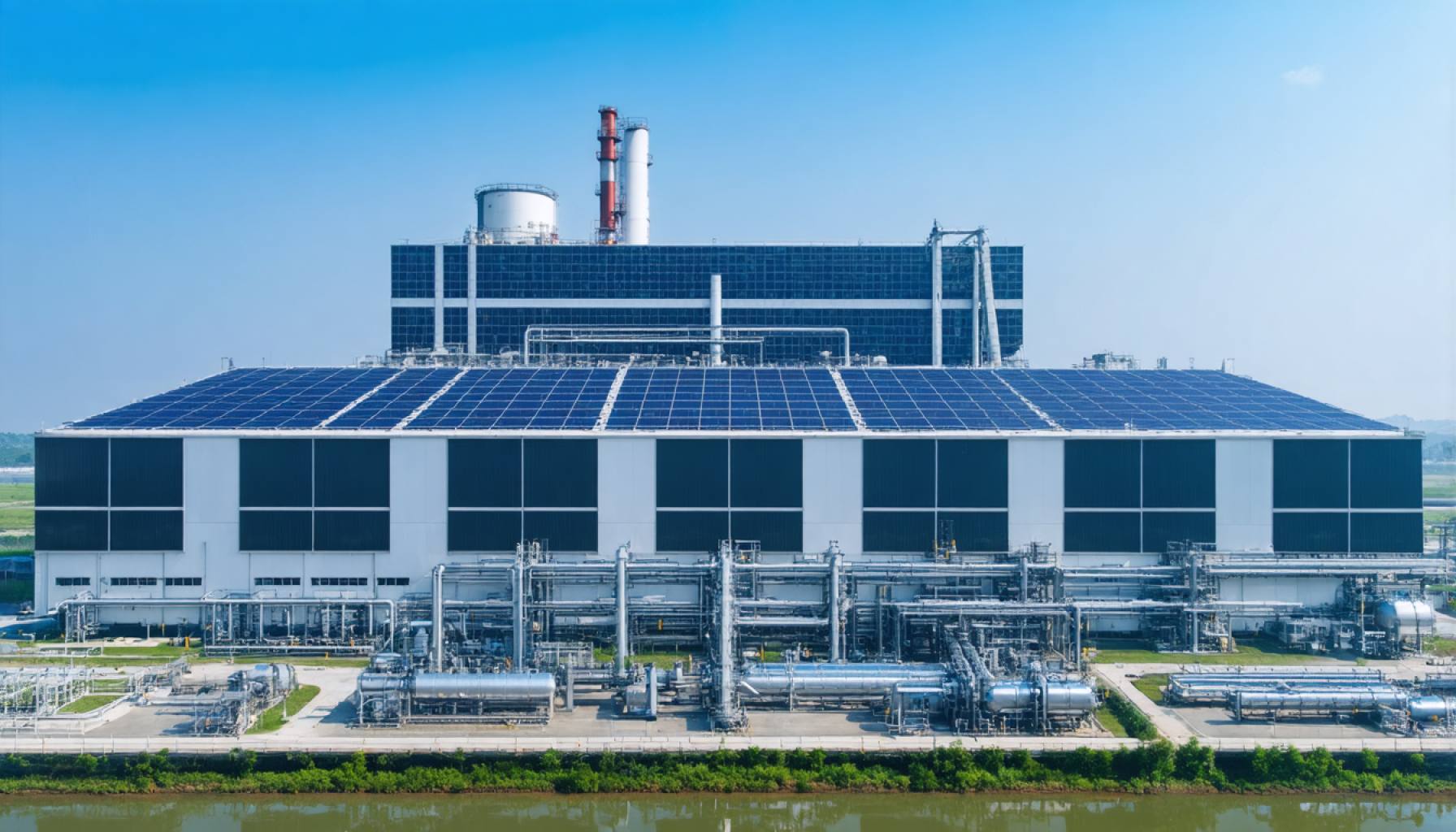- Doosan Fuel Cell’s new carbon capture technology transforms hydrogen production into an environmentally friendly process, showcasing its potential at a plant in Gwangyang, South Korea.
- The technology integrates carbon capture within hydrogen fuel cells, significantly reducing CO2 emissions during hydrogen extraction from natural gas.
- A single 10-megawatt plant using Doosan’s system can capture 97 tons of CO2 daily, highlighting its effectiveness in reducing industrial emissions without sacrificing energy efficiency.
- The innovation positions hydrogen as a cleaner energy source, impacting sectors like shipping, utilities, and manufacturing.
- Since its launch in September 2023, Doosan’s installation at Yeosu Gwangyang Port has demonstrated reliability and efficiency, with broader implementation planned for 2025.
- This development sets a new standard in the hydrogen industry, prompting global investments and technological advancements in clean energy.
A future of clean energy emerges as Doosan Fuel Cell unveils its revolutionary carbon capture technology, transforming traditional hydrogen production into an environmental triumph. Imagine bustling hydrogen power plants shedding their carbon-heavy past, refashioned by Doosan’s inventive spirit alongside partners Korea Hydro & Nuclear Power. Under the spotlight in Gwangyang, South Korea, this technological marvel exhibits its potential to recast hydrogen into a truly green energy icon.
The ingenuity lies in the harmonious melding of carbon capture tech within hydrogen fuel cells. Traditionally, extracting hydrogen from natural gas spews CO2 into the atmosphere. Doosan, in league with Airrane and KECC, deploys a cutting-edge membrane-based system to arrest this while illustrating sustainability in motion. Consider the impact: a single 10-megawatt plant equipped with Doosan’s system seizes an astounding 97 tons of CO2 each day, setting a high bar for industrial emission cuts without the energy trade-off.
Hydrogen, once chastised for its carbon footprint, stands taller with a green halo, thanks to Doosan’s breakthrough. This innovation transforms hydrogen operations into paragons of the eco-conscious era, marrying efficiency with environmental responsibility. For industries keen to shed carbon chains, this marks a pivotal moment. The implications ripple through shipping, utilities, and manufacturing sectors that eye cleaner horizons.
A joint crusade launched in September 2023 bore fruit swiftly. By December, Doosan’s inventive installation at the strategic Yeosu Gwangyang Port demonstrated both efficiency and dependability, sealing its promise. Come 2025, the large-scale rollout of these avant-garde systems aims to coincide with advancements in Doosan’s solid oxide fuel cells, collectively reshaping hydrogen’s global role as a clean energy stalwart.
Beyond transforming industry practices, Doosan’s technological feat sets a benchmark for the hydrogen domain. Addressing the “dirty secret” of hydrogen production, this initiative sparks a renewable renaissance, urging investments and innovations far and wide. Partnerships, as demonstrated by Doosan, KHNP, and others, are the backbone of progress—accelerating costs down and adaptation up.
In this era-defining moment, Doosan Fuel Cell’s carbon capture technology extends beyond engineering prowess; it paints a vivid picture of a sustainable hydrogen future. It promises a decarbonized tomorrow where hydrogen reigns as a pillar of clean energy, reminding us all that innovation, coupled with concerted efforts, powers the universal race against climate change toward an inevitable sustainable renaissance.
How Doosan Fuel Cell’s Carbon Capture Innovation is Transforming the Hydrogen Industry
Introduction
Doosan Fuel Cell has unveiled a groundbreaking carbon capture technology, which promises not only to revolutionize hydrogen production but also to make it an icon of clean energy. While the source article celebrates these advancements, there’s much more to explore in terms of practical applications, economic implications, and the broader impact on the energy landscape.
The Technology Explained
At the heart of Doosan’s innovation is the integration of a membrane-based carbon capture system within hydrogen fuel cells. This technology effectively captures approximately 97 tons of CO2 per day in a single 10-megawatt plant without sacrificing energy efficiency. This approach addresses the critical issue of CO2 emissions during hydrogen extraction from natural gas, offering a more sustainable production method.
Real-World Use Cases
– Power Generation: Industries like utilities can incorporate this technology to produce cleaner hydrogen and reduce their carbon footprints significantly.
– Shipping Industry: With maritime transport seeking greener alternatives, hydrogen, produced through Doosan’s technology, could become a key player in decarbonizing shipping fleets.
– Manufacturing: Manufacturers looking to reduce emissions may adopt Doosan’s carbon capture system to create a more sustainable industrial process.
Market Forecasts & Industry Trends
The global hydrogen market is expected to grow significantly, and innovations like Doosan’s could accelerate this trend. According to the Hydrogen Council, the hydrogen market could generate $2.5 trillion in annual revenues by 2050. Doosan’s technology aligns perfectly with the increasing global emphasis on lowering carbon emissions and expanding clean energy solutions.
Pros & Cons Overview
Pros:
– Significant reduction in CO2 emissions during hydrogen production.
– Maintains energy efficiency while capturing carbon.
– May lower long-term operational costs for industries adopting this technology.
Cons:
– Initial setup costs for the carbon capture system may be high.
– Dependence on natural gas as a raw material, which itself has environmental concerns.
Insights & Predictions
As Doosan plans a widespread rollout by 2025, these advancements could signal a shift towards widespread adoption of carbon-neutral hydrogen production. Analysts predict that this could drive more investments in infrastructure to support clean hydrogen, fulfilling a critical role in global decarbonization efforts.
Actionable Recommendations
1. Invest in Technology: Companies in industries with significant carbon footprints should consider investing in hydrogen fuel cells equipped with carbon capture technology.
2. Policy Advocacy: Encourage policymakers to create incentives for adopting clean hydrogen technologies, promoting a more sustainable energy infrastructure.
3. Cost-Benefit Analysis: Businesses should conduct thorough analyses to understand the long-term financial and environmental benefits of integrating such technologies.
Conclusion
The innovations by Doosan Fuel Cell exemplify the potential for technological advancements to tackle pressing environmental challenges. As hydrogen becomes more sustainable, it stands to reshape the energy sector, driving economies towards a cleaner future. Businesses and governments alike should take note and partake in this promising leap forward in the clean energy landscape.
For further information on sustainable energy technologies, visit Doosan.
